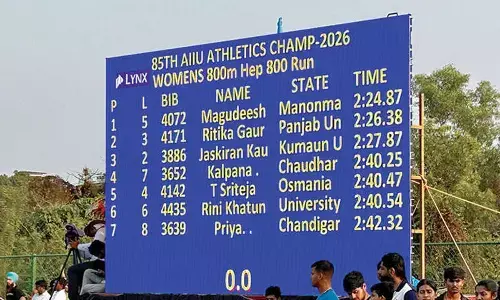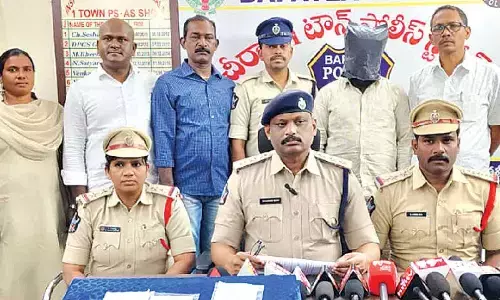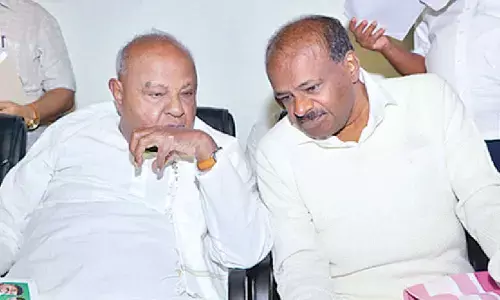Educational magic in tribal areas

Transformation unfolded at the Integrated Tribal Development Agency (ITDA) at Parvathipuram in Vizianagaram district. In a couple of years, icons emerged from our schools getting into professional courses and proving the critics of caste reservations wrong. Vavilala Gopalakrishnaiah visited the ITDA and seeing the performance, he was in tears. He remarked that Bapuji would have been so happy seeing the schools and felt his own life was fulfilled after this visit. What more do we treasure than such remarks from one of our most renowned and revered leaders of independent India!
School education was another core area in Integrated Tribal Development Agency (ITDA) that received our attention and allocation of resources from the 1988 financial year. Education and literacy are potent indicators of social and economic development and impact the inner strength of tribal communities. It is widely recognised that the development goals must be expeditiously implemented in these backward areas, facilitating the economically and socially disadvantaged to participate in society as citizens without handicaps. Education confers that strength on all individuals to attain social mobilisation and improve scope for economic uplift.
This transformation unfolded at the Integrated Tribal Development Agency (ITDA) at Parvathipuram in Vizianagaram district. In a couple of years, icons emerged from our schools getting into professional courses and proving the critics of caste reservations wrong. How can I forget my first visit to Dharma Lakshmi Puram Ashram School in my early days in ITDA? Just as the review of the school results soaked me in thoughts of despair, I heard headmaster R Ch Satyanarayana trying his best to give me confidence about future. There was darkness all over due to the power breakdown and for first and last time I vented my disappointment. I had to speak that way to all the teachers working in ITDA. How do I know the magic that all of them would perform under able leadership of young DTWO Chinna Veerabhadrudu? They overcame serious challenges with a smile on their face. The kind of sacrifices that they were prepared to voluntarily make was simply unbelievable.
Thus, in an academic year in the district, the tribal welfare institutions marched over the plane area schools in the public examinations. It was difficult for the DEO T V S Sastry to hide his surprise over this result in the presence of Collector M S Prasad. That prompted the Collector to organise a felicitation function for the teachers and students who fared well. A memorable day for ITDA! Some of the initiatives of ITDA were lauded as good practices and the state government goaded the entire tribal welfare department to adopt them.
It was P V Narasimha Rao who as the HRD Minister brought out a comprehensive policy for education. Our ITDA addressed in pursuance to that policy the twin objectives of providing access to education and improving quality of education. Seeing the results of this ITDA, the department of tribal welfare scaled up these efforts to all five north coastal districts in later years during 1996 to 1998. A huge number of more than 380 single teacher schools were sanctioned to ITDA Parvathipuram to improve access to primary education. Orders were issued under Schedule V of the Constitution. Critical mention was made of ‘local tribal’ in these orders of state government. These 10th class pass or fail local tribals were to perform the teaching role efficiently and improve enrolment in all schools. Some of these teachers were then sent to training programme (TTC). A video-film in Telugu was shot and titled ‘Nanu saduvukunta’ with the help of a professional team ably led by Bh Rammurthy, an eminent artiste from Visakhapatnam. Attada Appalanaidu, a renowned writer, helped with the script and dialogues. This film was released by Kalipatnam Ramarao, a renowned short-story writer and critic, and it was screened in all the Ashram schools. This video-film showed real-life situations faced by tribals and brought out clearly how they were being exploited or cheated or tricked by outsiders. Aspects of adult literacy were also covered in that film. It was a pure labour of love of the entire production team. In that film role of a single-teacher school teacher was depicted very clearly and attractively.
The film was by itself a learning material for all the freshly recruited teachers. These teachers were extremely grateful to the government for the opportunity and responsibility bestowed on them. They initiated the induction of tribal children to these schools in their dialect only. Even written and spoken Telugu was difficult for these children to cope with at that level. We owe it to Gidugu Venkata Rammurthy, that colossus of a linguist who spoke about language barriers in learning by tribals way back in 1894. He eloquently spoke of this care to teach tribals in their native dialect only to gain patronage from tribals. Very few know that Gidugu of Srikakulam was the architect who created script to a dialect spoken by Savara tribal group. In Odisha, that script is used in primary education text books in tribal areas.
I am illustrating one example of institutional change here. The girls in Regidi High school showed phenomenal results in curricular and co-curricular activities. Approach to this school in monsoon months was difficult due to the stream flowing there. Even the buses used to stop there dropping all tribals of far-off villages.
The school had a huge deficit of building infrastructure. I was aghast to see the dedication and duty-mindedness of teachers and their families here. Shunning all their needs for family privacy, these couples mingled so well and gave phenomenal thrust to activities in the school.
Under the aegis of KVK Training Centre at Rastakuntabai, these girls were also given more comfortable Punjabi dresses to wear. Some of the girls were trained in tailoring skill as a co-curricular activity by Geetha. This additional loose garment did wonders to the confidence of tribal girls. For festivals like Deepavali or Vinayaka Chavithi, all of us were together in those celebrations. Importantly, all the families of PO, DTWO and others were visiting and dining with the children. I have to mention about the marvel of a school magazine brought out by Education wing of our ITDA. ‘Maa Santhosha Chandrasala’ was the name given to that publication that contained articles of 25 schoolchildren and an equal number of teachers. This special issue was released by a galaxy of intellectuals. Professor B Sarveswara Rao, Professor G Haragopal and my father came for the inauguration of training programmes at different times and they were delighted with the interaction with students and teachers.
Vavilala Gopalakrishnaiah visited the ITDA and seeing the performance, he was in tears. Seeing the dedication of teachers like R Ch Satya Narayana, M Seetha Rama Murthy, D Satya Nandan Rao, Ganteda Gaurinaidu , M Leelavathi, D Venkata Rao, P A V Jagannatha Rao, D Jesudas , Ch Suguna etc., he was speechless, and was moved by the sacrificing nature of Parinaidu at another school in Gorada. Vavilala remarked that Bapuji would have been so happy seeing the schools and felt his own life was fulfilled after this visit. What more do we treasure than such remarks from one of our most renowned and revered leaders of independent India!

















